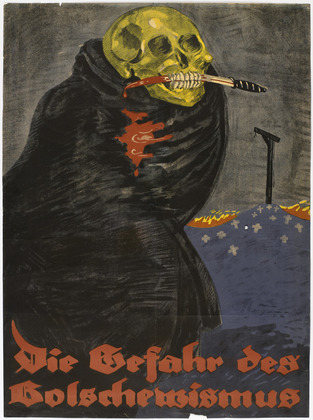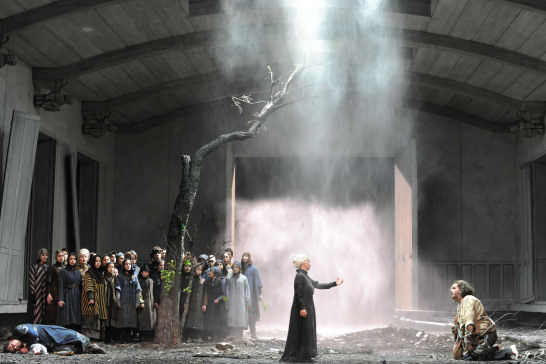
I remember Geoffrey O Brien wrote once, I forget where, about just the sheer volume of film and TV screened since its invention. I dont recall the figure, but it was suitably staggering. I think about this volume sometimes, and how obviously it affects all of us in the West. In the developed world. Of course there is no shortage of TV in under-developed worlds. One has to reach the far perimeter of non development to find no electronic media. .
The corporate media is changing all the time, but always sort of behind the curve. But then network TV is mostly obsolete. But think back over fifty years of network programming. How much that has informed the cultural dialogue of most U.S. citizens. The cultural landscape is a TV landscape.
One aspect worth considering is the writing of dialogue. I thought of this recently watching the latest season of Boardwalk Empire. I felt I had seen these scenes thousands of times. I had heard this or that conversation a thousand times.

As one of the commenters said in the previous thread……you see the stuff even when you don’t.
That’s right. Perhaps I had really heard this conversation, and perhaps I hadn’t. In this case, my guess is that I had, and perhaps many times. Literally. And conversations like it, oh, a thousand times? Ten thousand times?? This is where the repetition can be felt most acutely. These were “good” actors, an expensive show, and yet there was a numbing quality to it. The number of television and film gangsters outstrips the real number of gangsters historically by a factor of 1000 to 1. And that might be a lowball estimate. I’m sure it is, in fact. Ten thousand to one. Fifty thousand to one. I don’t know. But think of the numbers of stories, narratives, related to just prohibition. The Volstead Act. How much celluloid, and how much time used on the ‘airways’ (quaint term).
So history is now re-written by hack Hollywood writers, and the obvious conclusion is that this is how people learn history.

But there is something else. Its the dialogue. As I listened to this show, I thought, almost every sentence is a cliche. They aren’t cliches, some of them, but they feel like cliches. I have heard them in my dreams. They are spoken in my dreams.
I knew a Native American detective years ago. Fascinating and very smart and tough guy. He was a PI, not a cop. Raised on the rez. He said only six or seven people remained who spoke his language. And that the only time he heard it was in his dreams.
I feel the connection here, though I can’t tell you what it is, exactly.

Which brings me to, as it has to this month, the U.S. presidential elections. When I see Mitt Romney and Obama open their mouths, I actually *hear* nothing. I don’t think thats an exaggeration, but I often *hear* nothing. Silence. Some primordial silence blankets whatever room I am in. I know there are sounds, words, but it has become some kind of sub-cliche form. There is an absolute draining of meaning. This is part of the many effects produced by the system as it compulsively produces product. The presidential elections are just another TV show, and in a sense, the parts being peformed show very little difference from network TV. Martin Sheen as the President inWest Wing, Robert Stack as Eliot Ness or Robert DeNiro as Al Capone. Tony Soprano, or Tony Montana, Bill Clinton. Which are the most vivid for the majority of Americans?
I’ve been accused of priviliging a psychoanalytic model. I don’t know why that’s an accusation, but it is. Anyway, it’s true. For I think this effect of volume links to dreams, and to the mimetic.

Here is a long quote…..
“In 20th century approaches to mimesis, authors such as Walter Benjamin, Adorno, Girard, and Derrida have defined mimetic activity as it relates to social practice and interpersonal relations rather than as just a rational process of making and producing models that emphasize the body, emotions, the senses, and temporality. The return to a conception of mimesis as a fundamental human property is most evident in the writings of Walter Benjamin , who postulates that the mimetic faculty of humans is defined by representation and expression. The repression of the mimetic relation to the world, to the individual, and to others leads to a loss of “sensuous similarity”. “In this way language may be seen as the highest level of mimetic behavior and the most complete archive of non-sensuous similarity: a medium into which the earlier powers of mimetic production and comprehension have passed without residue, to the point where they have liquidated those of magic.”
Michael Taussig’s discussion of mimesis in Mimesis and Alterity is centered around Walter Benjamin and Theodor Adorno’s biologically determined model, in which mimesis is posited as an adaptive behavior (prior to language) that allows humans to make themselves similar to their surrounding environments through assimilation and play. Through physical and bodily acts of mimesis (i.e. the chameleon blending in with its environment, a child imitating a windmill, etc.), the distinction between the self and other becomes porous and flexible. Rather than dominating nature, mimesis as mimicry opens up a tactile experience of the world in which the Cartesian categories of subject and object are not firm, but rather malleable; paradoxically, difference is created by making oneself similar to something else by mimetic “imitation”. Observing subjects thus assimilate themselves to the objective world rather than anthropomorphizing it in their own image.
—
Adorno’s discussion of mimesis originates within a biological context in which mimicry (which mediates between the two states of life and death) is a zoological predecessor to mimesis. Animals are seen as genealogically perfecting mimicry (adaptation to their surroundings with the intent to deceive or delude their pursuer) as a means of survival. Survival, the attempt to guarantee life, is thus dependant upon the identification with something external and other, with “dead, lifeless material” [18]. Magic constitutes a “prehistorical” or anthropological mimetic model – in which the identification with an aggressor (i.e. the witch doctor’s identification with the wild animal) results in an immunization – an elimination of danger and the possibility of annihilation. Such a model of mimetic behavior is ambiguous in that “imitation might designate the production of a thinglike copy, but on the other hand, it might also refer to the activity of a subject which models itself according to a given prototype”. The manner in which mimesis is viewed as a correlative behavior in which a subject actively engages in “making oneselfsimilar to an Other” dissociates mimesis from its definition as merely imitation.
In Adorno and Horkheimer’s Dialectic of Enlightenment, mimesis (once a dominant practice) becomes a repressed presence in Western history in which one yields to nature (as opposed to the impulse of Enlightenment science which seeks to dominate nature) to the extent that the subject loses itself and sinks into the surrounding world. They argue that, in Western history, mimesis has been transformed by Enlightenment science from a dominant presence into a distorted, repressed, and hidden force. Artworks can “provide modernity with a possibility to revise or neutralize the domination of nature”.
Michelle Puetz
Winter 2002 ”
——————————————————————————————————

Adorno politicized the idea of mimesis, and saw western Enlightenment thought as a violence against mimetic ways of processing meaning, of knowing, and hence narrowed human experience. Narrowed it the better to control it. It is interesting to look at Rene Girard’s ideas on this, for Girard saw mimesis as the origin of violence and aggression, and of conflict. It is disruptive. For Adorno, the control of the mimetic was to control the populace.
For Girard, our desires are always second hand, we desire what others desire. It’s worth looking at Girard’s notion of the scapegoat here, the formation of mob thinking, and collective violence.
But I want to focus more on Adorno’s notion for now. Its useful, though, to remember that Horkheimer and Adorno, while writing Dialectic of Enlightenment, had shifted their perspective on anti semitism from a purely Marxist and economic analysis to one in which anti-semitism, and the extermination of Jews under National Socialism, was seen as linked to extra economic factors (outside the massive shift of capital taking place) and connected the Jews to absolute objects of domination. Horkehimer said in 1943, that anti-semitism was now the stigma of civilization.
Horkheimer and Adorno were (as can be seen in their correspondence during this period) afraid of offending the more rigid Marxist thinkers of the Frankfurt School by publishing too much of their own changed thought, which trended toward a more Psychoanalytic and anthropological direction. Their choice of Odysseus, as the central player in their analysis of modern domination, was to illustrate the conquest over sacrifice, and over the worlds of magic and superstition. But it was also their plan to use it as a way to sort of sneak in their changing analysis of anti-semitism. It was also of course a juxapostion to fascist fetishizing of homeland and rootedness, with that of exile, homelessness and the diaspora. The figure of Odysseus is in the end, a self sacrifice over repression. He is imitating the Gods and nature. But he is not identifying with them. It is a psychoanalytic conception — an introjection of sacrifice.

Without getting too far into this, a few things need to be said. Mimesis traditionally was seen in stages from identification, to magic (in an effort to overcome nature), to myth, as a more complex effort to overcome which includes ideas of allegory, and finally to reason. Mimesis is never really just a mimic of nature. Horkheimer and Adorno borrowed heavily from Freud (of Totem and Taboo) in seeing a split psyche in a helpless subject and overpowering object. In Freud, of course, this was linked to the fetish, which is both symbolic and real, a form of knowing and not knowing. And his elevation of the father, etc.
But for Horkheimer and Adorno, we substitute for symbolic and real, the law of equivalence and calculability. So that abstract culture was a repressing of primitive mimesis. Now they indulged a sort of fantasy of Jewish history, a phylogenic fairy tale, but the outlines were that Judaic prohibitions on image and word were the creation of modernity. What matters in this is that fascism was archaic terror pretending to be authenticity, heroism and patriotism (and there is a clear renunciation of Heidegger in this). Adorno would later write in defense of the inauthentic. And that art preserves a rememberance of a world prior to prohibitions. While the authentic is genuineness as fascist restoration of a pure identification with Being (Heidegger). Anti fascist mimesis is an appropriation of the inauthentic. A rejection of man identifying with God.
The point though was a critique of anti-semitism. They eventually simply saw it in scapegoating terms not terribly different from that of Girard.

And this brings us back to repression. Or the narrowing and control of human experience by a destruction of all mimesis save for a fascist regard for a special class connected to God.
So one could spend a good deal of time on Derrida and other post modern thinkers….(Derrida may not even qualify as post modern, I don’t know) it’s more to the point here to look at the role art plays in releasing consciousness toward a mimetic process that is appropriating the inauthentic (Adorno’s definition of it.
——————————————————————
“Art is thus transformed from a refuge for mimesis to a positive vehicle of it. What this transformation within the realm and role of art implies is a corollary
transformation of the power and sweep of mimesis itself. The sinking back into
nature does not mean becoming nature once again but is rather the attempt at
assimilation with the environment. However, the “criminality” of mimesis im-
plies that what has once severed itself from nature cannot become nature once
again. Mimesis is thus the necessarily thwarted inclination to become one with
nature, indeed to become nature. Mimesis ends with the act of becoming not
nature, but like nature.” Tom Huhn.
————————————————————————
I actually don’t think this is quite correct, but it’s useful because it introduces the criminal trope. And that in turn links to Desire. And this in turn, to my mind, brings us back to modern media saturation of cultural product. Its as if the sheer volume of narrative works to grind down difference, and wear away the mimetic faculties to the point where we have only the most primitive mechanisms of storytelling, or just silence. It is one crime after another after another after another.

Tom Huhn again:
” The implication for a theory of production is clear: production
is the method of creating likenesses, which, by dint of the structural impossibil-
ity of their being identical to that which they are a product of, are instead after-
images not of what they seek to (re)produce but rather of their own thwarted
movement toward identity. Products—artifacts—carry the mimetic trace of their
own becoming, that is, of failed identity. (Commodities might then be defined
as products that begin by embracing the premise of their own failed identity.
The ideology of the commodity, if you will, is thus the foreclosure in advance
of the movement toward identity.) It is the failure of identity, and the repetition
compulsion of mimesis which attests again and again to this failure, that allows
production to live up to its concept: to be production of something.”
——————————————————–
The production of cultural commodity then erases difference. These products….Boardwalk Empire …are no different from detergent commercials. They also short circuit the mimetic (as do detergent commercials).
There is a violence, clearly, at the heart of this, and it extends to the violence of global capital. There is also, because of the scale of production, the numbers of commodity, an enclosing of consciousness. As Kasper said in the comments on the previous thread, you see them even when you don’t see them. This is, however, also about global production of narrative buidling an anticipation into the engagement. An anticipation of something which never comes. But the failed anticipation is then just repeated. Mass culture is in the business of failed anticipation.
I have come to see this in people’s discussions, in behavior, where repetition is the principle driving everything. For this frustration, this disappointment with the Spectacle, is producing compulsive repetition of the entire process.
![dead-class1[1]](http://john-steppling.com/wp-content/uploads/2012/10/dead-class11-1024x749.jpg)
Kanter’s Dead Class
I tend to return everything to theatre. So let me do that again. Theatre because, precisely because of its marginalized economic status, and its limited (and therefor more social) scale, resists this anticipation to some degree, and allows for a stimulation of the mimetic. The audience may not be used to such engagement, and certainly one hears in the U.S. this very complaint about going to the theatre. Its uncomfortable. But then real society on any scale is now uncomfortable for a lot of people. So, to what degree can art exist outside this corporate global enclosure? I have no answer, but I am increasingly certain that mass media blurs difference, and hence further encroaches on the mimetic process and instead only reproduces the form of its own production. Now, there have to be exceptions, and there are. And it’s important to know how this works, and to be able to distinguish when this happens. Part of the reason for this lies in my belief that all narrative is engaged with by audiences on an individual level as well. And that level is the re-narrating of the individual and personal history of their formation. If this is even partly true (and, its also possible even mass produced product retains an echo of the creators personal story) then whatever model you choose for the creation of the psyche provides a space for a return of the liberating potential of mimesis.

It is interesting to note Adorno’s problem with Stravinsky was that his music regressed into archaic mimesis…and reproduced an infantilizing akin to “children’s play gestures”. He found this regression in Stravisnky’s gestural fixations. This is useful if one thinks about the insistance on infantilizing in modern marketing strategies. Adorno saw art as too easily remembering its primitive mimetic past in duplicating nature. He found bad actors to be ape like and clownish. I mention this because of my notions on the ‘uncanny’ in performance. I suspect the appearance of the uncanny in film and more, in theatre, is linked to the traces of history in performative gesture. In body language and in movement. A movement based on punishment (Grotowski or Kanter) yielded a difference in movement that was in the service of creating a ‘space’ for the uncanny in the play. While this discipline, in the end, offered limited satisfaction, it’s not unworthy of study.The work of Kanter, in particular, seems larger than life today, even if viewed only in video. Now in Wagner’s writing on aesthetics, he linked the sound of the consonant to feet stomping on the ground, and the vowel to an elevation in air. Adorno’s response was to condemn Wagner for composing music *for* conductors, those who would gesture accordingly, and provide a beating accompaniment. This linked for Adorno to the gestures of the dictator and an authoritarian music.
I think if one examines the actors of today’s mass produced cultural product, it’s not hard to find a homogenized sameness of movement. A non-threatening sexualtiy, and a slightly glazed cast to the eyes. Again, of course, there are exceptions, and often very surprising ones. Marlon Brando is obvious in his feminized grace, but John Wayne as well, or Robert Mitchum. So that for all his reactionary aspects, a Wayne can still contain something outside the themes of his work that is disunifying and uncanny.

I argued last posting, and in the comments, that aesthetic education was important. I would again argue it is important exactly because the erosion of difference is now so complete. The compulsive repetition of dialogue (Sorkin’s self plagiarizing comes to mind) and a reliance on cliche, and on the rhythm of the anctipated laugh or gasp. Laugh tracks were stopped because they were no longer needed. In the same way branding replaced conventional advertising. You didn’t have to advertise *anything*, only the brand itself. An abstraction. A lifestyle. So with writing. You don’t have to say anything, not even a joke, only reproduce the structure of the joke or the sentimental cliche.

Adorno
The material relations of production are clear. The global enclosing of psychic space and domination of all space. The giant 7 sisters of media are at work in all this, and mostly it is only the voice of the corporate machine that one hears via the mediation of hack writers and directors. Still, sometimes other elements intrude. And there is a good deal of work outside the corporate system. Nobody escapes all of it. Everything we do is at least partially contained. I argued for autonomous zones where another kind of education might take place. I do it these days on-line…..so I use the facilities of mass media. The same way I use electricty and food sold wrapped in plastic by the Empire. There is no outside anymore. Not really. One inside is just more brutal, one less. But I think refusing to examine this, and to ignore the importance of art is a big and rather puritanical mistake. That community level autonomy being even possible is a huge question, but however it happens, aesthetics should play a crucial role. I wrote before of a fan culture. I realized today, reading through Adorno, and others, that the fan is the obedient consumer of brand. He is the organizer of brand relations. The fan is recreating the notion of the subjective tyranny that demands the world reflect him or her. This reflection however is but a shadow of a shadow, for it side steps the work itself and goes directly to the brand, and its management.

The manufacture of film and TV narratives is firstly the absence of mimesis. It is the subject, the bourgois identity imprinting its code on the viewing or listening. The violence before the experience.
The mass homogenization of experience, of a controlled mimetic, a diminished mimetic, and its replacement with the bourgois identity that now is so directed toward acceptance of its place in domination, is accomplished by the violence of capitalist rationality.. The entire politcal theatre of U.S. presidential elections has been without “narrative”. Mouths move, suits move, and nothing is said. For what is said cannot be heard. And nothing is said, anyway. It is the spectacle without any echo of history. It is born complete in the present, a petri dish reality projected on private screens in the head. I thought of the old magic lantern slides I had inherited as a child. They were in 3D. I remember them far more vividly than I do whatever show I might have seen last night. They conjured up a past.
What must even now be repressed? How much do people simply look away, and carry that guilt with them? These are not sadistic unfeeling people. I hope not. I don’t think so. So it’s perhaps an intriguing question just how the effectivity of mass culture works. Is the terror of mass incarceration behind it? Is it just the terror of being singled out? I can’t say. And of course millions are in fact rejecting the spectacle, but the spectacle works hard to hide them. There is a return in the psyche I suspect, to a place forgotten or exiled from. Or of a nomadic memory of pre-organized dreaming. The uniforms are there to crush it, but one can only hope they don’t find it because they cant read it.



“And of course millions are in fact rejecting the spectacle, but the spectacle works hard to hide them.”
Couldn’t agree more with this. Not just ‘hide’ though. So many speeches and policies from western politicians exist to actively incarcerate, terrorize or even murder those rejecting it – either from circumstance or by choice (when they say “our way of life” or “values” they mean proximity to the Spectacle really). IMO, a growing problem with Left discourse in the Imperium is it’s constant need to speak ‘to’ the spectacle on it’s own terms, further shrinking the reality of those outside it while it does.
Yeah, totally agree David. There make sure there is no visibility, and if it becomes for some reason visible…..anything outside that which reinforces the status quo, they either criminalize it……..if possible, or dig into their bag of terms…..’conspiracy nut’, ‘america hater’, ‘disturbed’, ‘and unruly mob’……….etc. I mean they even when opposition is recognized…..its made , sometimes subtly, to seem like fringe crazies. They under report crowd size, they make sure to link images of the most weird people they can find, …..i mean its all sort of obvious in a way, but its effective. People dont want to be associated with ‘crazies’. If you bring up covert CIA operations then immediatetly you are called out as tin foil paranoid………even when the CIA has admitted doing it.
And I mean that is all obvious, as i say. But your point about speaking TO the authority is right. THere are so many mechanisms in place, and they are reproduced by film and TV. An example is this idea of remorse. One must confess guilt…and repent, You must demonstrate you see the error of your ways. I remember during various probations I had, or any interaction with the justice system, it was important to apologize, and to show remorse. If you didnt, as I failed to do, you are labeled a sociopath. Which is all that term means. And you see this as some form of absolute law………you see it in narratives…..cop shows etc…….the criminal is to be more severely punished if he or she does not SHOW REMORSE. its a form of humiliation. There are a jillion others.
“a growing problem with Left discourse in the Imperium is it’s constant need to speak ‘to’ the spectacle on it’s own terms, further shrinking the reality of those outside it while it does.”
That’s exactly right, and it goes back to talking about pop. Because of the power of marketing and pop, the left feel they need to co-opt it in order to be effective.
“you see it in narratives…..cop shows etc…….the criminal is to be more severely punished if he or she does not SHOW REMORSE. its a form of humiliation. There are a jillion others.”
This goes directly to punishment, and most acutely the Death Penalty. The horrible Petit murders in Connecticut will be on heavy rotation for decades because of the cartoon villian-ness of the younger murderer (the playwrites son oof) and how much this one case helps to reinforce that narrative, and allow for the carrying out of the white supremacist program of executing Troy Davis, and maybe Reggie Clemons, etc..